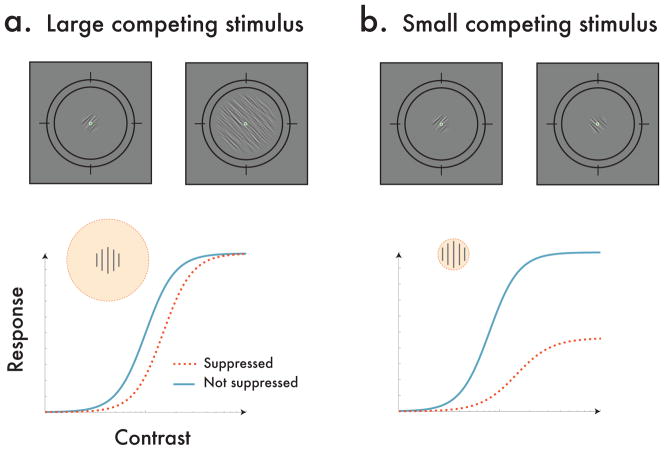Fig. 1.
Examples of competing stimuli used in the experiment, and their predicted impact on contrast response functions. (a) In some trials, the probe stimulus was dichoptically suppressed by a large stimulus. Under this configuration, the normalization model predicts a contrast gain shift, with the largest effects occurring at mid-contrasts, and little-to-no effect at low and high contrasts. (b) In other trials, the probe stimulus was the same size as the stimulus in the competing eye. Under this configuration, the normalization framework predicts both a shift in the contrast gain, as well as an attenuation of the response gain, with the largest effects occurring at high contrasts.

